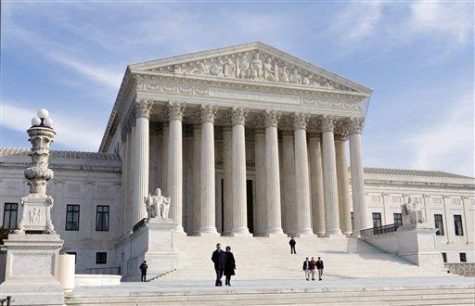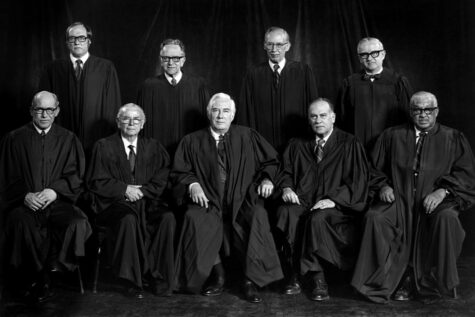Who will Trump Appoint to the Supreme Court?
December 2, 2016
Now that he has secured the presidency, Donald Trump has the opportunity to secure a conservative majority in the Supreme Court.

Since the death of Justice Anthony Scalia last February, there has been a vacant spot on the Supreme Court. Obama nominated Judge Merrick Garland for the seat, but the Republican house and senate postponed the decision, believing that the new justice should be selected by the new president. So, the task of nominating a Supreme Court justice now falls on president-elect Donald Trump.
Throughout his campaign, Trump made many promises about the Supreme Court. During the final presidential debate Trump said that if he was elected president he would appoint pro-life justices. Pro-choice proponents fear that this would overturn Roe v. Wade, the landmark Supreme Court decision giving women the right to abortion. In a post-election interview with CBS’s 60 Minutes, Trump promised to appoint a conservative justice who is pro-life and pro-Second Amendment.
Unlike he had previously eluded to on the campaign trail, Trump told 60 Minutes that he does not plan to revisit the Supreme Court ruling on same-sex marriage, saying, “It’s done. It – you have – these cases have gone to the Supreme Court. They’ve been settled. And – I’m – I’m fine with that.”
During his presidential campaign, Trump made an unorthodox move by releasing two lists of his potential Supreme Court nominees. These lists contain a total of 21 people, eleven originally then an additional ten added in late September.
According to a press release on Trump’s website this September, Trump was considering Keith Blackwell, Charles Canady, Steven Colloton, Allison Eid, Neil Gorsuch, Raymond Gruender, Thomas Hardiman, Raymond Kethledge, Joan Larsen, Mike Lee, Thomas Lee, Edward Mansfield, Federico Moreno, William Pryor, Margaret A. Ryan, Amul Thapar, Timothy Tymkovich, David Stras, Diane Sykes, Don Willett and Robert Young for the Supreme Court.

There has been grumblings from the left about these nominees, particularly ones that lean far to the right, such as William Pryor.
Pryor, a judge on the 11th Court of Appeals, has been a longtime outspoken opponent of Roe v. Wade, saying in 2002 that, “Abortion is murder, and Roe v. Wade is an abominable decision.”
Charles Canady of the Florida Supreme Court, another one of Trump’s nominees, has opposed same-sex marriage and is credited with coining the phrase “partial-birth abortion.”
John Malcom, a legal fellow at The Heritage Foundation, told CNN, “If these are the kinds of people whom he is going to consider, that should satisfy any conservative.”
Now that Trump has been elected President, the list of his proposed justices is no longer on his website. US News speculates that Trump was pandering to conservatives by making his Supreme Court picks public and does not truly intend on nominating any of them.
In addition to the filling the seat left open by Anthony Scalia, the Supreme Court may be looking at some other changes. 78-year-old Stephen Breyer and 83-year-old Ruth Bader Ginsburg, two liberal justices on the court, are expected to retire soon. However, neither has definite plans to.


